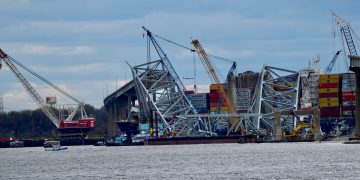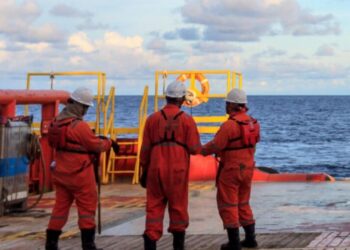UK P&I Club informs about the new IMSBC Code amendments, which were adopted in the form of a consolidated version of the whole IMSBC code and will enter into force on 1 January 2025.
According to Captain Akshat Arora, Senior Risk Assessor, members who are involved in the transport of solid bulk cargoes are recommended to ensure compliance with the latest amendments. However, some contracting governments may apply these amendments (or parts thereof) on a voluntary basis from 1 January 2024.
Revised Cargo Information and Declaration form
As explained, under Section 4.2 of the IMSBC Code (cargo information), now the shipper has to provide additional information, namely the cargo’s bulk density, as required by SOLAS regulation XII/10. Hence 4.2.2 has been amended to include “bulk density” information as sub-item.
The Maritime Safety Committee, at its 107th session (31 May to 9 June 2023), in reviewing the outcome of the eighth session of the Sub-Committee on Carriage of Cargoes and Containers (CCC 8), recognized the urgent need to resolve a discrepancy between the International Maritime Solid Bulk Cargoes (IMSBC) Code and regulation XII/10 of the International Convention for the Safety of Life at Sea (SOLAS), 1974, concerning the omission of bulk density information in the form for cargo information for solid bulk cargoes, and approved the revised form for cargo information for solid bulk cargoes, pending formal entry into force of the amendments to the IMSBC Code, as given in the annex to this circular.
Member Governments are invited to bring the revised form to the attention of all concerned, taking into account the voluntary application date of 1 January 2024 for amendment 07-23 of the IMSBC Code, pending its envisaged entry into force on 1 January 2025, and in particular to:
-
- encourage shippers to use cargo information in accordance with the revised form; and
- request port State control officers to note the situation, and use discretion when the ship does not have the required cargo density information until the
amendments to the IMSBC Code enter into force.
This revision was necessary in order to align the IMSBC Code with SOLAS XII/10, which requires information on bulk density to be furnished by the shipper. In verifying the density of solid bulk cargoes, reference should be made to the Uniform method of measurement of the density of bulk cargoes.
The following changes have been affected in Appendix 1 (individual schedule of solid bulk cargoes):

Deleted cargoes from the solid bulk cargo list:
| Bulk cargo shipping name (BCSN) | Group | Hazard |
| FISH MEAL (FISH SCRAP), STABILIZED UN 2216 Anti-oxidant treated | B | This cargo has effectively been re-classified from a Class 9 dangerous goods to a MHB cargo. The IMSBC Code carriage requirements remain the same, but ships will no longer require a dangerous goods certificate to carry the cargo. |
The list of non-cohesive cargoes in Appendix 3 (properties of solid bulk cargoes) has been extended to include the following cargoes:
– BARYTE, FLOTATION CHEMICAL GRADE
– CRUSHED GRANODIORITE FINES
– DUNITE
– DUNITE FINES
– ELECTRIC ARC FURNACE DUST, PELLETIZED
– POTASSIUM NITRATE
– SODIUM NITRATE
– SODIUM NITRATE AND POTASSIUM NITRATE MIXTURE
– SUPERPHOSPHATE
This means that the angle of repose for the above cargoes must be determined prior to loading so that the relevant trimming provisions under section 5 of the IMSBC Code are applied accordingly.
The list of Solid Bulk Cargoes for which a Fixed Gas Fire Extinguishing System may be exempted has been updated to its 6th revision to include the new cargo “ELECTRIC ARC FURNACE DUST, PELLETIZED” that can be exempted from having a fixed CO2 fire-fighting installation on board ships.

































































